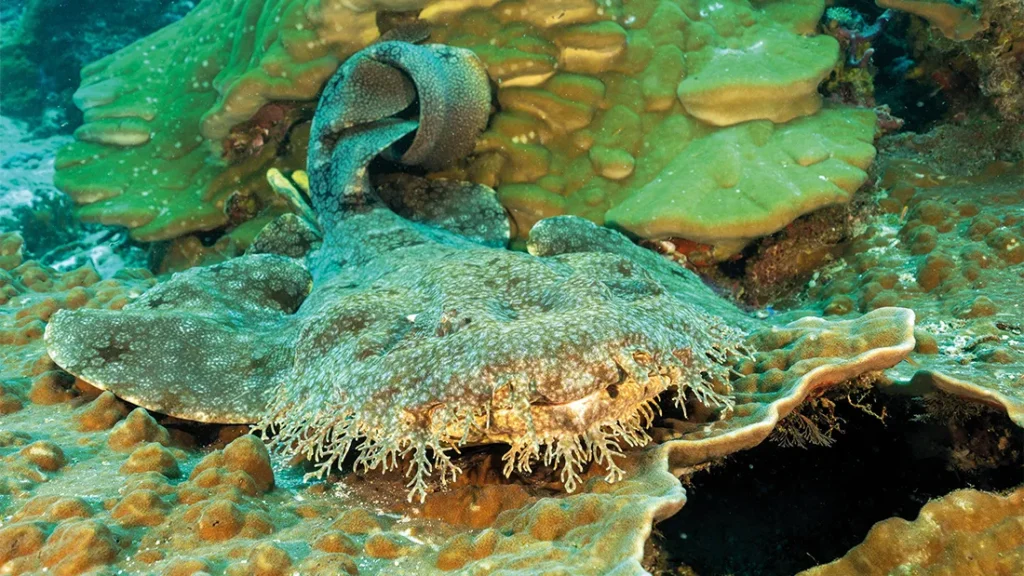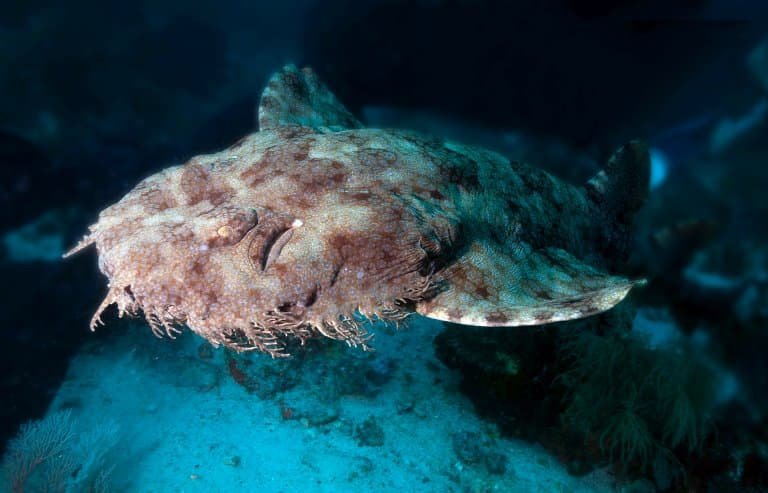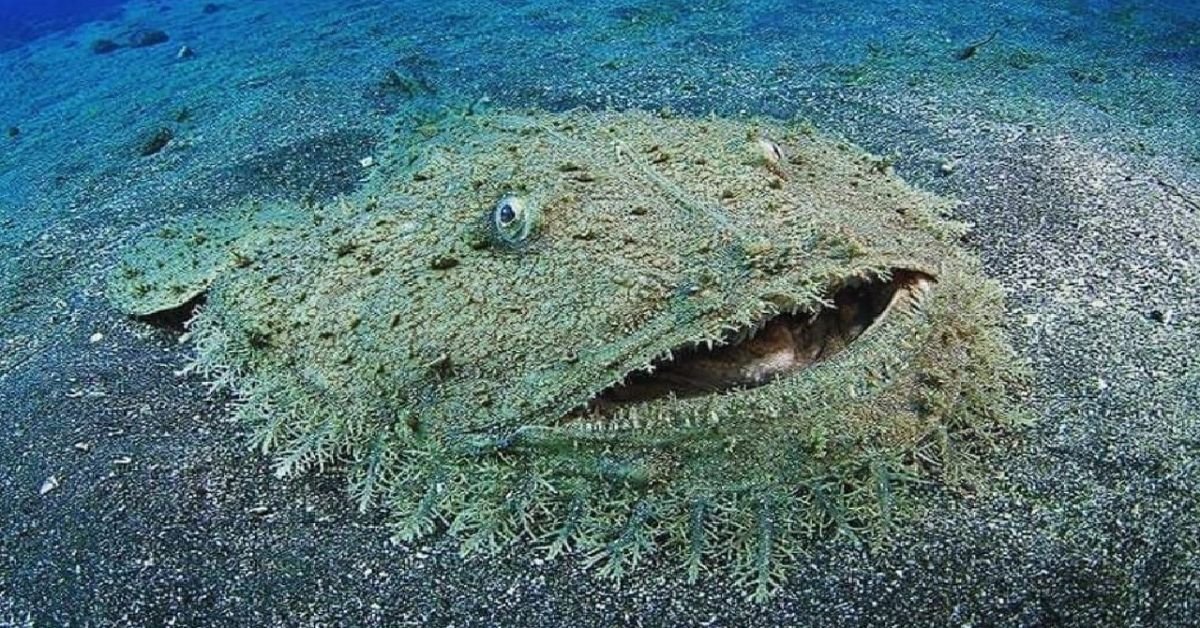The Tasselled Wobbegong: A Master of Disguise in the Ocean
The Tasselled Wobbegong is a fascinating creature that embodies the wonder of marine life. Known for its intricate patterns and remarkable ability to blend into its environment, this species of carpet shark is a true marvel of the natural world. With its broad, flattened body and unique appearance, the tasselled wobbegong is not just an ocean dweller but also a master of camouflage, capable of surprising even the most observant divers.
A Close Look at the Tasselled Wobbegong
Belonging to the family Orectolobidae, the tasselled wobbegong is the only extant member of the genus Eucrossorhinus, making it a truly unique species. These sharks can grow to impressive lengths of up to 1.8 meters, featuring a broad, flat body and a head adorned with distinctive tassels that give the shark its name. These tassels are fleshy appendages that protrude from the shark’s snout and mouth, further helping it blend into the ocean floor.
Native to the shallow coral reefs off northern Australia, New Guinea, and nearby islands, the tasselled wobbegong thrives in environments where it can use its exceptional camouflage to its advantage. This carpet shark is a bottom-dweller, preferring to stay close to the sea floor where its coloration and unique body shape help it remain almost invisible to prey and predators alike.

The Wobbegong’s Camouflage Strategy
What truly sets the tasselled wobbegong apart from other sharks is its ability to blend seamlessly with the ocean floor. Its body is covered in a mottled pattern of browns, yellows, and greens, which mirrors the textures of the coral reefs and rocky substrates it inhabits. The fleshy tassels around its head mimic the appearance of seaweed or coral, further enhancing its ability to remain undetected by both prey and predators.
This camouflage is an essential survival tactic for the tasselled wobbegong. By staying perfectly still and hidden, it waits patiently for small fish and invertebrates to swim by. Once an unsuspecting meal approaches, the wobbegong strikes quickly, using its large mouth to capture its prey in a swift motion. Its ambush-style hunting technique is highly effective, allowing the tasselled wobbegong to thrive in its niche as a predator.
Behavior and Habitat
The tasselled wobbegong prefers shallow coral reefs, where it can find shelter among the crevices and coral heads. These reefs offer plenty of hiding spots, making them an ideal environment for a species that relies on stealth. It can also be found in deeper waters, though it generally stays close to the bottom, where it can rest undisturbed.
While the tasselled wobbegong is not considered a threat to humans, it is best admired from a safe distance. It is a relatively docile species that poses little danger unless provoked. However, its quiet nature and cryptic appearance mean that it’s often spotted by divers who are fortunate enough to see it in its natural habitat.

Conservation and Protection
Like many marine species, the tasselled wobbegong faces challenges from habitat degradation, including the destruction of coral reefs and pollution. As human activities continue to impact marine ecosystems, species like the tasselled wobbegong could be at risk if these important habitats are not protected. Conservation efforts aimed at preserving coral reefs and reducing marine pollution are essential to ensuring the survival of this unique species.
Conclusion
The tasselled wobbegong is a true marvel of the ocean, showcasing nature’s incredible ability to adapt and thrive. With its masterful camouflage, intriguing behavior, and distinctive appearance, this carpet shark is a fascinating example of the complexity and wonder of marine life. For those lucky enough to encounter it, the tasselled wobbegong offers a glimpse into the hidden world of the ocean floor, where beauty and stealth combine in a perfect balance.
